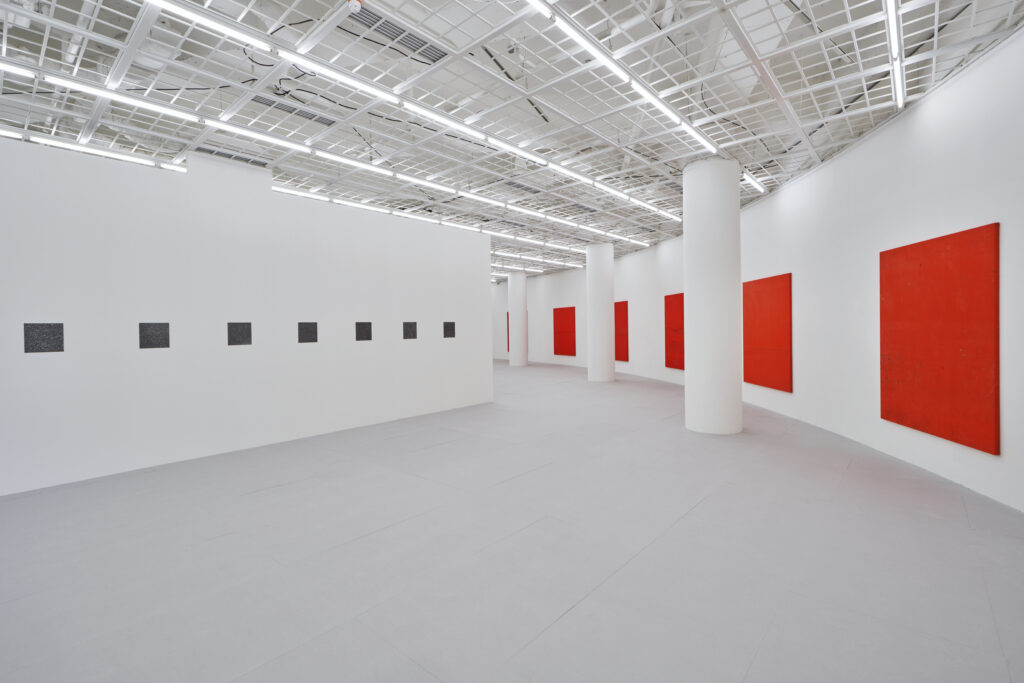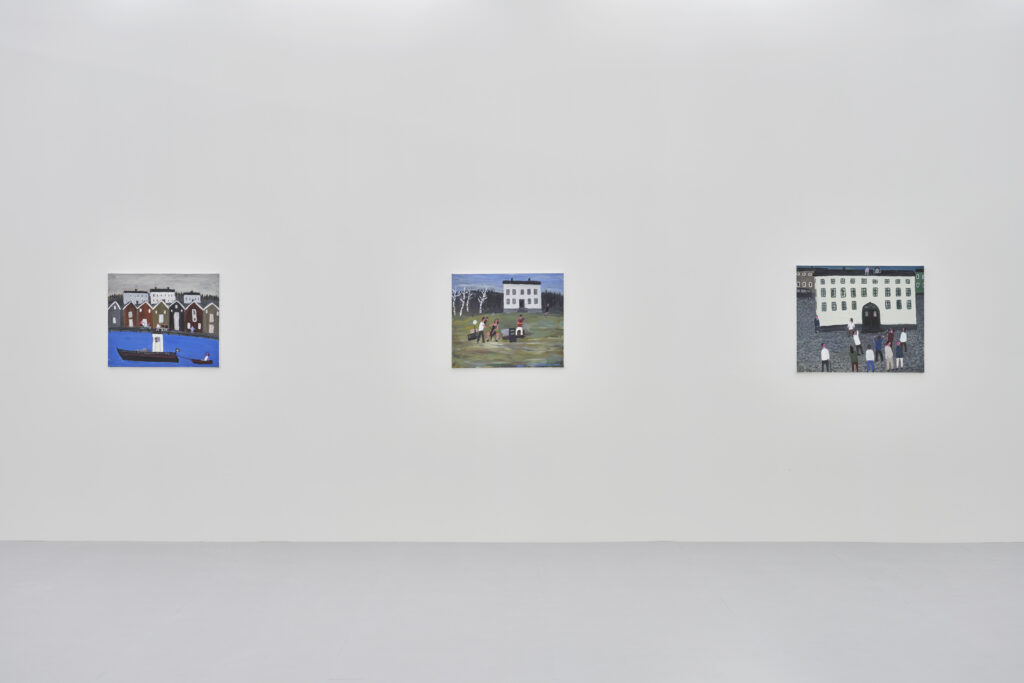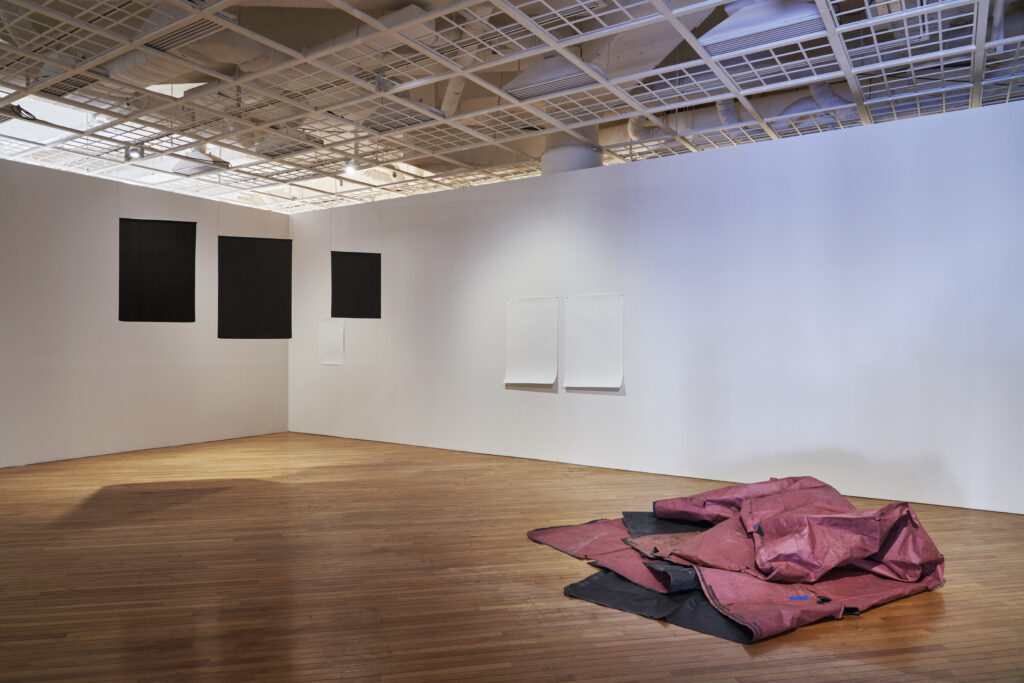Minimalism-Maximalism-Mechanissmmm Act 1–Act 2
January 20 – March 6, 2022
Space 1, Space 2, Art Sonje Center
Minimalism-Maximalism-Mechanissmmm Act 1–Act 2
The exhibition Minimalism-Maximalism[1]-Mechanis[2]smmm[3] Act 1–Act 4 is conceptualized in four acts by Jacob Fabricius, and one of four acts, Act 4 is curated by Mikkel Elming. Act 1–Act 2 from 20 January to 6 March is followed by Act 3–Act 4 from 17 March to 24 April at Art Sonje Center.
The exhibition will stage traditional expressions in a non-traditional and experimental setting. With clear curatorial intent, the exhibition examines how artists select, use and work with materials. Minimalism-Maximalism- Mechanissmmm’s four acts develop from a traditional setting and physically, static display to a participatory, relational, and activating exhibition. Through the series of four acts the audience will encounter multiple ways of disseminating, experiencing, utilizing, viewing, and questioning curatorial methods and institutional approach to presenting works.
Act 1 will present minimalistic works. Embedded in the works are traces of making them, and the process is a fundamental element of the works. The works materiality is mainly influenced by the way they have been touched by nature and/or urban settings. Act 1 mainly consists of tactile and sensual works on canvas and paper, while Act 2 will present paintings, where the artists are creating narrative stories from urban and rural areas. In Act 2 the storytelling is generated through the artist’s memory, and the works materiality can be experienced through the canvases, and their real and fictional characters. Act 1 and Act 2 will generate contemplative relationship between the artwork, their making, and the observer. Act 3 and Act 4 on the other hand invite the audience to interact and actively participate with their bodies.
Minimalism-Maximalism-Mechanissmmm Act 1–Act 4 examines how artists use materials to tell stories about their surroundings and daily life. The exhibition creates connections between the artworks and the observer, and examines how the curator can affect the aforementioned relationship between works and audiences. The four acts can be experienced as individual shows, but the exhibition’s plot-twist evolves across the different acts through public interaction – direct and indirect. As a whole, Minimalism-Maximalism-Mechanissmmm’s four acts are presented as thematic of how the institution presents itself, the art and the observer, to give the audience the experience and knowledge of, how meaning and connections are created spatially.
In addition to this folder there are extended captions. The artists have been asked to make an instruction of How do you make the work? in Act 1 and How do you tell the story? in Act 2. The following instructions could inspire to think and rethink the process of making art. The conceptual instruction approach is inspired by the exhibition Art by Telephone that took place at Museum of Contemporary Art Chicago in 1969. The wall labels are meant to activate the viewer, so they tap into a discussion about original versus copy, copyright versus copyleft, and Do-It-Yourself audiences. We hope these instructions and artist’s vision of making work will encourage and inspire the visitors. Welcome to Minimalism-Maximalism-Mechanissmmm Act 1–Act 2.
[1] One movement is often a reaction to other movements in the arts. Maximalism is a reaction against Minimalism, an aesthetic of excess. The philosophy can be summarized as “more is more”, contrasting with the minimalist motto “less is more”.
[2] A mechanism is usually a piece of a larger process, known as a mechanical system or machine. Sometimes an entire machine may be referred to as a mechanism; examples are the steering mechanism in a car, or the winding mechanism of a wristwatch. However, typically, a set of multiple mechanisms is called a machine. In the arts, there are also a set of multiple mechanisms, which may be called the art machine.
[3] Ssmmm is a purposefully misspelling and should be read as a stutter (talk with continued involuntary repetition of sounds, especially initial consonants) or as a machine getting stuck, making repeated mechanical noises. The audience may ask themselves how they can have an influence on the institution, and if the museum that they frequently visit is stuttering, repeating itself and seem stuck. It can also be experienced as the sound of pleasure like the song Mmm Skyscraper I Love You, which Underworld’s Karl Hyde described as stream of consciousness.





